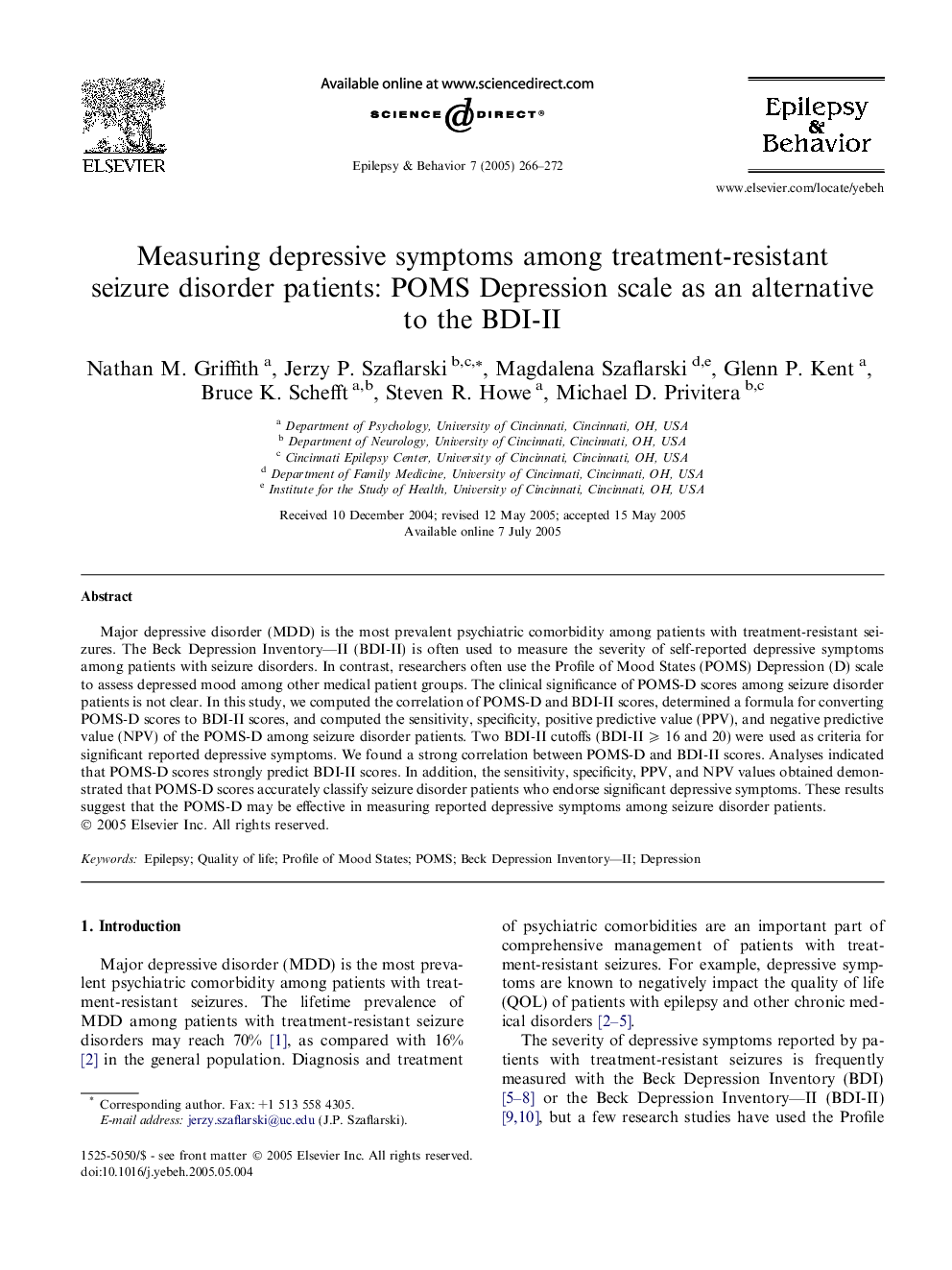| Article ID | Journal | Published Year | Pages | File Type |
|---|---|---|---|---|
| 9190361 | Epilepsy & Behavior | 2005 | 7 Pages |
Abstract
Major depressive disorder (MDD) is the most prevalent psychiatric comorbidity among patients with treatment-resistant seizures. The Beck Depression Inventory-II (BDI-II) is often used to measure the severity of self-reported depressive symptoms among patients with seizure disorders. In contrast, researchers often use the Profile of Mood States (POMS) Depression (D) scale to assess depressed mood among other medical patient groups. The clinical significance of POMS-D scores among seizure disorder patients is not clear. In this study, we computed the correlation of POMS-D and BDI-II scores, determined a formula for converting POMS-D scores to BDI-II scores, and computed the sensitivity, specificity, positive predictive value (PPV), and negative predictive value (NPV) of the POMS-D among seizure disorder patients. Two BDI-II cutoffs (BDI-II ⩾ 16 and 20) were used as criteria for significant reported depressive symptoms. We found a strong correlation between POMS-D and BDI-II scores. Analyses indicated that POMS-D scores strongly predict BDI-II scores. In addition, the sensitivity, specificity, PPV, and NPV values obtained demonstrated that POMS-D scores accurately classify seizure disorder patients who endorse significant depressive symptoms. These results suggest that the POMS-D may be effective in measuring reported depressive symptoms among seizure disorder patients.
Related Topics
Life Sciences
Neuroscience
Behavioral Neuroscience
Authors
Nathan M. Griffith, Jerzy P. Szaflarski, Magdalena Szaflarski, Glenn P. Kent, Bruce K. Schefft, Steven R. Howe, Michael D. Privitera,
